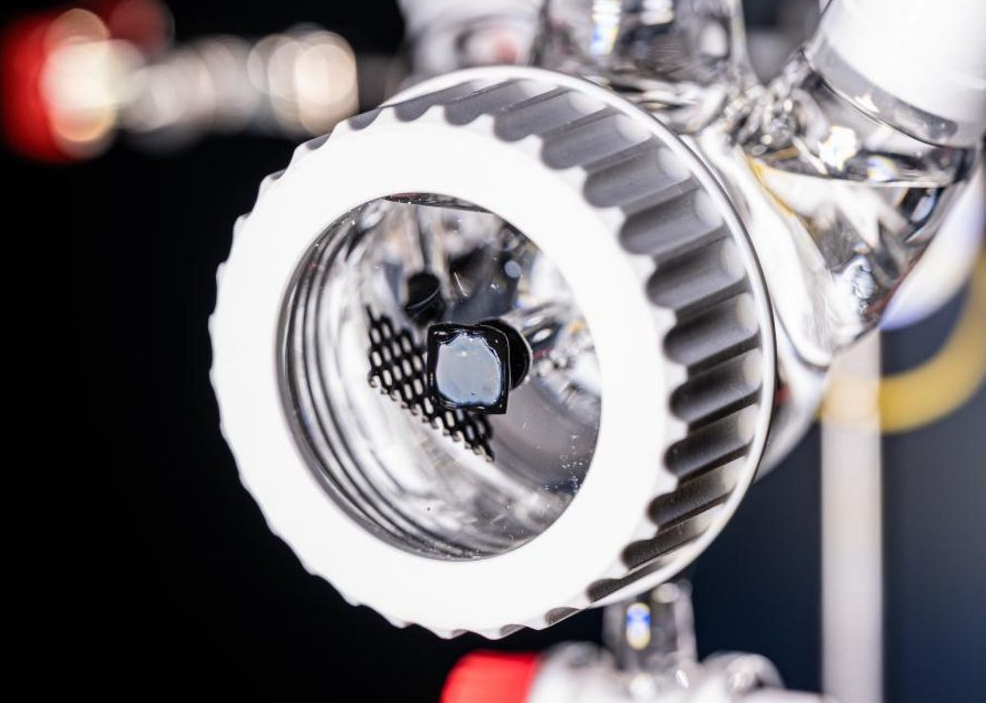Photoelectrochemical Schlenk cell functionalization of photoelectrodes – second-highest solar-to-hydrogen efficiency, but on larger areas
Solar water splitting, also referred to as „artificial photosynthesis“ produces green hydrogen from solar energy. Within the H2Demo consortium, the research group of Dr. Matthias May at the University of Tübingen developed an efficent photoelectrochemical cell showing a solar-to-hydrogen efficiency of 18%, based on a solar absorber of the project partner AZUR SPACE.
The photoelectrochemical solar cell presented here makes any external electrical circuit superficial as a separate electrolyser is not needed, anymore. The newly developed Schlenk cell approach with optical in situ control enables a high control of the interface between the material layers and the electrolyte. The functionalisation of the solar absorber results in the deposition of a transparent catalyst layer on top of a specifically formed oxide layer, so that it is able to directly split water on its surface.
These developments in the course of the PhD thesis of Erica Schmitt resulted in an efficiency of 18% solar-to-hydrogen on three times larger areas than the current world record of 19% for direct solar water splitting and significantly longer photoelectrode lifetimes. The next steps in the H2Demo project include an improvement of the long-term stability, the transfer to a more cost-efficient silicon-based material system, and the scale-up to larger areas.
Publikation:
Schmitt EA, Guidat M, Nusshör M, Renz A-L, Möller K, Flieg M, Lörch D, Kölbach M, and May, MM. Photoelectrochemical Schlenk cell functionalization of multi-junction water-splitting photoelectrodes. Cell Reports Physical Science 4 (2023), 101606, https://doi.org/10.1016/j.xcrp.2023.101606.
